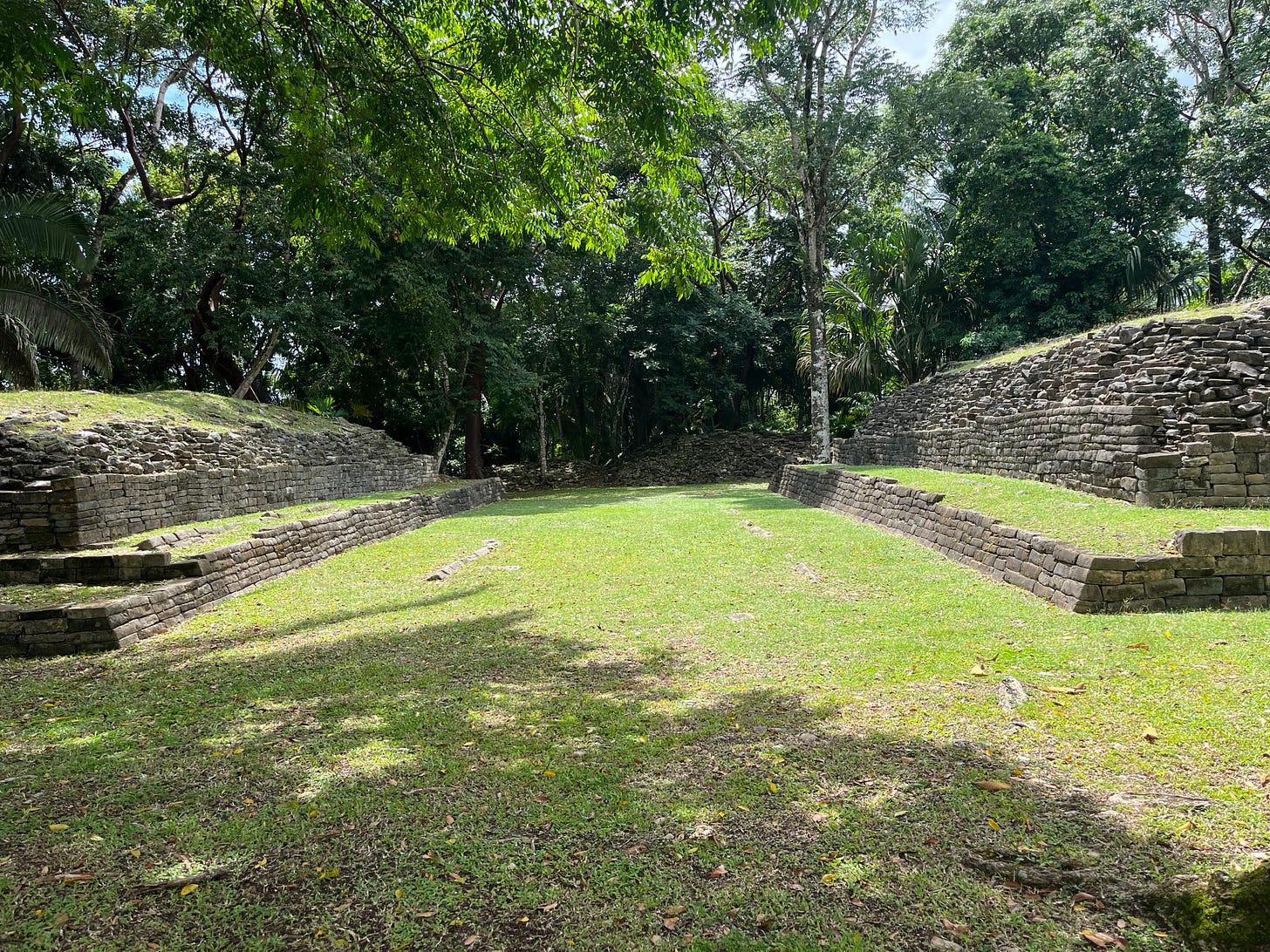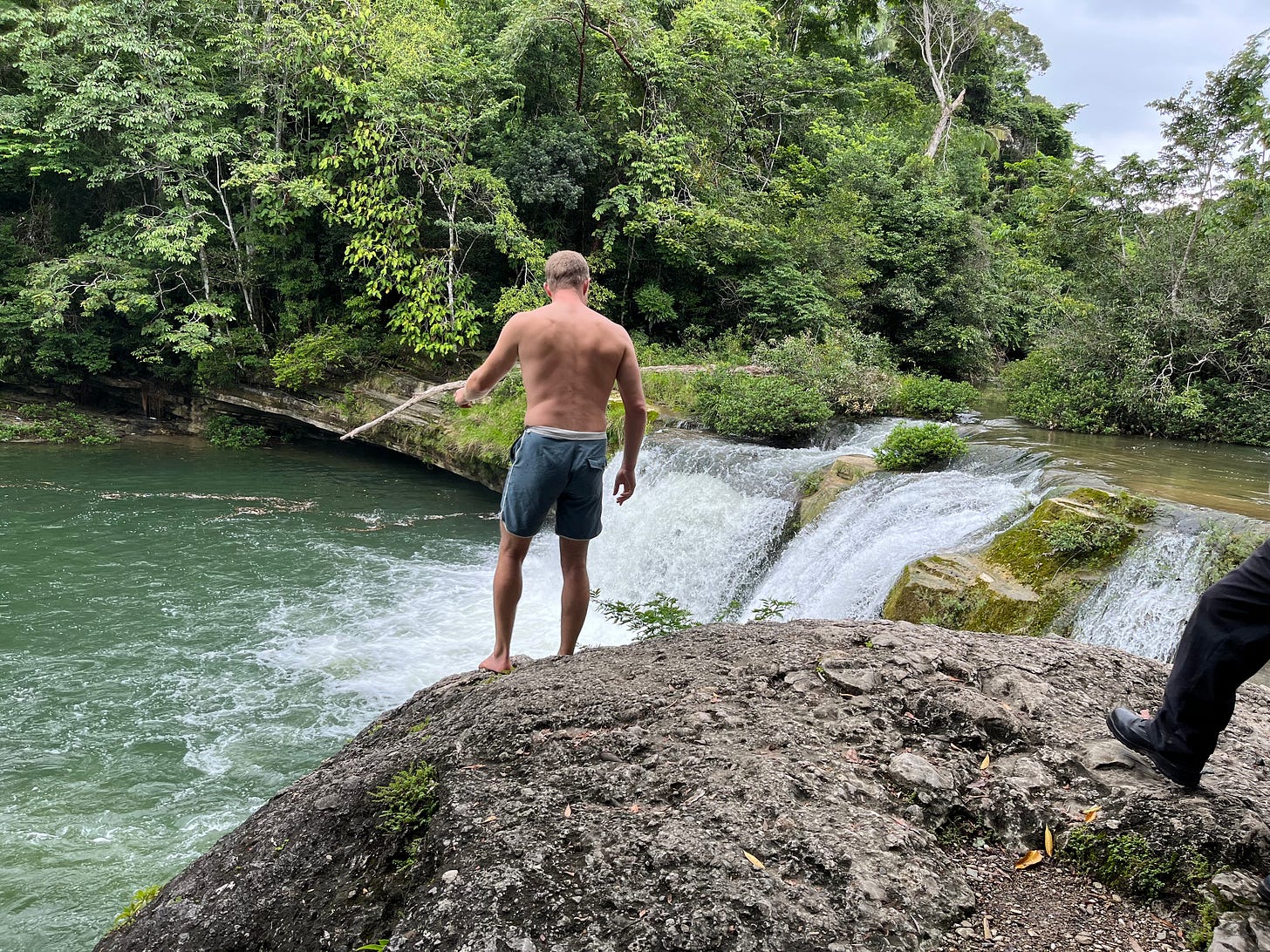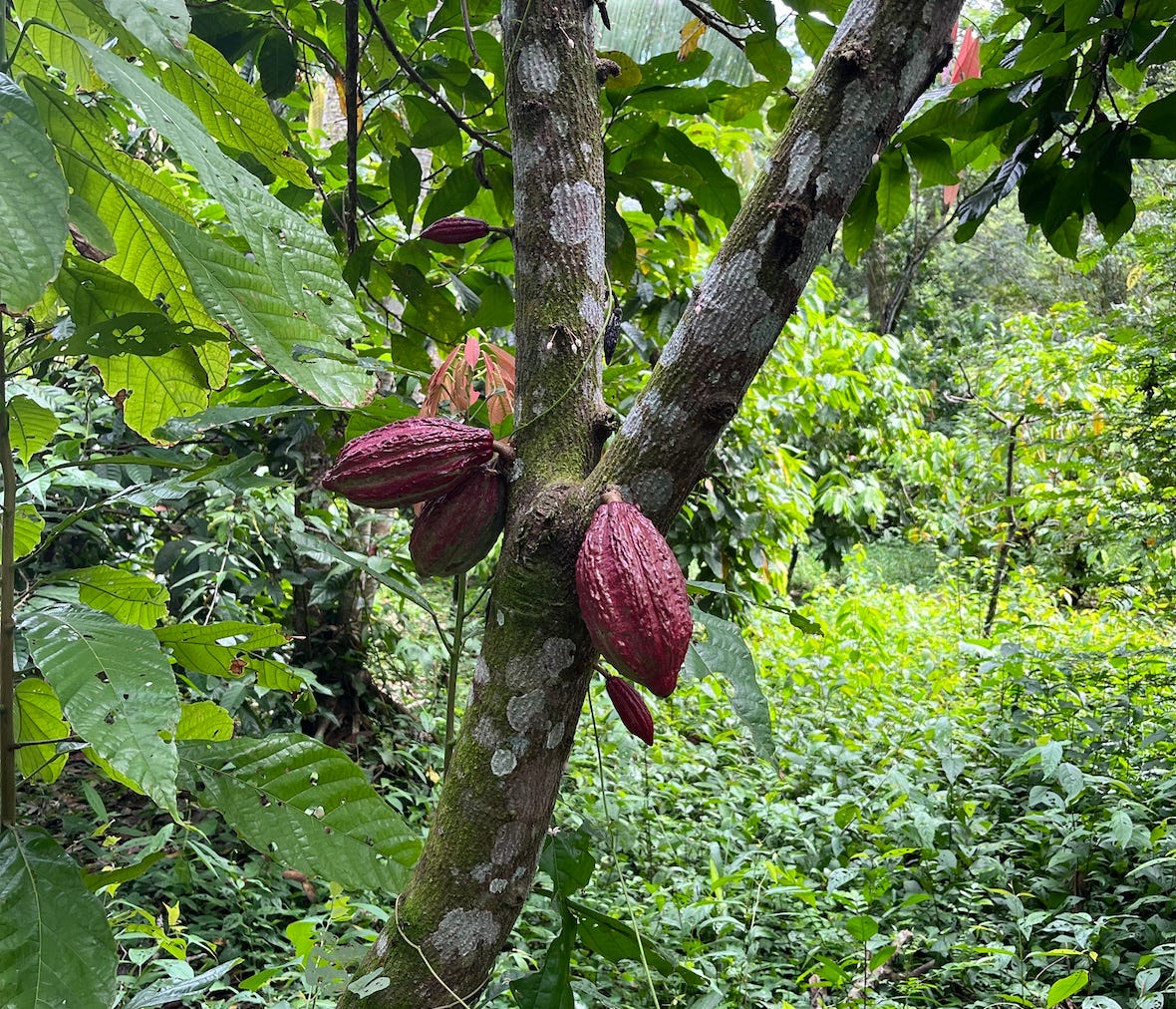Seeking Balance in Belize
A week relaxing in Belize left me with a new-found appreciation for the catalytic role that small NGOs play in protecting the environment and communities.
As I lingered over breakfast at the Copal Tree Lodge in southern Belize, watching truly spectacular birds like Collared Aracaris and Gartered Trogons flit from branch to branch, I reflected on just how unlikely the entire scene was. The birds, the jungle, the American ecotourists spending a week in Belize without their kids in search of rejuvenation — none of it would have been possible without the work of a small, local NGO: the Toledo Institute for Development and Environment (TIDE), which was established in 1997 to combat illegal fishing.
I believe that a straight line can be drawn from TIDE’s work to combat fishing to my stay in Belize because their work created the conditions for an ecotourism industry to develop in the Toledo district. To combat illegal fishing, TIDE’s approach was to
Engage with the government to legally protect important habitats;
Educate community members about the negative impacts of over-fishing;
Train community members to join the ecotourism sector as hospitality workers or as guides for fly fishing, birding, or kayaking tours; and
Empower community members to patrol, protect, and maintain their forest and marine environment.
A key part of TIDE’s plan was attracting ecotourists like me, so they established a tour guiding subsidiary called Tide Tours and recruited others to establish tourist-friendly accommodations. One of these groups was El Pescador, a fly fishing resort in San Pedro, Belize, that bought a sugar and cattle farm from a US Confederate decedent. (After the Civil War, many Confederates fled to modern-day Belize to establish sugar plantation and recreate their old lives, though with “indentured servants” from South Asia serving as the labor.)
Over time, the fly fishing lodge was sold and transformed into the Copal Tree Lodge, where I stayed. Today the lodge offers activities beyond fly fishing, including birding, chocolate making, rum tasting, tours of local Mayan ruins, jungle adventures, and medicinal healing plants tours of its 3,000 acre farm-to-table organic farm.
The guides at Copal Tree Lodge are amazing, and several were trained at TIDE, including Martin, who worked at TIDE for a decade, won national tour guide of the year in 2018, and led our tour of the Mayan ruins at Lubaantun and the Rio Grande national park. Like many of the people who worked at Copal Tree, Martin lived in a village and preferred a traditional way of life. He has a small farm with a few dozen cacao trees that his wife harvests and transforms into delicious chocolate bars using the traditional stone-grinding method. Like many Mayans we met, however, Martin prefers drinking chocolate to eating it.
Amateur archaeology being what it was one hundred years ago, the British team that rediscovered Lubaantun used dynamite to “clear” the jungle, blowing the top off of several ancient buildings in the process. This gave the site its name, Lubaantun, or “the place of the fallen rocks” in the local Mayan language. It was a gathering place where Mayan tribes came to trade for hundreds of years during the Late Classic Period (600-900 AD).
After touring Lubaantun and realizing how little I know — and how much I want to know — about Mayan history and culture, we stopped in a Mayan village for a traditional, maze-based lunch that we helped prepare. The food was delicious, but the most meaningful part of the experience was feeling as though our tourist dollars were making it easier for our host to continue living and thriving in the village lifestyle she knew and loved. Feeling energized, we headed to the Rio Grande National Park, which is co-managed by the Government and local Mayan communities — who receive a portion of all of the ticket sales from tourists like us entering the park — for a short hike, scary cliff jump, and refreshing swim in the river.
Beyond the trip to Lubaantun, we wanted to tag along with the rangers who patrol the Golden Stream Corridor Nature Preserve and work to prevent poaching as rangers for a day. Many of the rangers are local Mayans, and we were excited to experience the jungle through their eyes. Unfortunately, our tour was canceled due to a death in the community. Instead, we did excellent birding and a medicinal plants tours. The medicinal tour was led by a South Asian guide whose family had come to Belize to work on the Confederate sugar plantations in the 1860s.
In my view, TIDE was (and is) successful because it catalyzed the creation of a balanced eco-system and economy benefit everyone. Community members are engaged, consulted, trained, and included in all of TIDE’s work. Protected and maintained forests and waters attract eco-tourists like me, who inject money into the local economy that more than offsets the potential short-term profits available from logging the forest or over-fishing. According to our birding guide, local fisherman police themselves and reject practices that would lead to over-fishing because they know that it’s better for them economically to preserve the fisheries and support sport fishing tourists. We need that to remain the case, because once poaching is the best way to make a living, illegal activity is usually around the corner.
Beyond the Toledo District, preserving and protecting nature has become central to the politics of Belize. The country recently worked with The Nature Conservancy to do a debt for nature swap in which the country pledged to protect 30% of its marine environment and spend $4 million per year on marine conservation in exchange for wiping away much of its foreign debt. This is amazing news, and one of the reasons that the reefs we visited later in our trip were in such good shape, though the general degradation of the coral habitats due to ocean warming and acidification was heartbreakingly present.
I believe that none of this would have happened — the ecotourists, the debt for nature swap, the impetus to preserve the natural environment — without small NGOs on the ground like TIDE showing the way. As usual, Paul Hawken was right. In his prescient 2007 book Blessed Unrest, he argued that the millions of NGOs dedicated to protecting the environment and fostering social justice made up the largest, and most under-appreciated, mass-movement in human history.
While the progress in Belize is amazing, it isn’t guaranteed to last. Natural system seek balance and replenish themselves; the tourism industry does not. To keep the positive feedback loop that TIDE started in southern Belize going, the tourists need to come back; birding guides without customers will eventually seek new lines of work.
So my request is that you find a small NGO — it could be in your community or far away — that’s having a positive effect on the environment and donate to it. Explore ways that your donations, time, expertise, and tourist dollars can support the causes you believe in. There are millions of NGOs doing amazing work to protect the environment. Our job is to support those people, and aspire to become those people.
***
For those like me who have never seen a cacao plant, here’s what they look like. The fruit around the cacao beams are delicious — and make a nice garnish for a cocktail.






